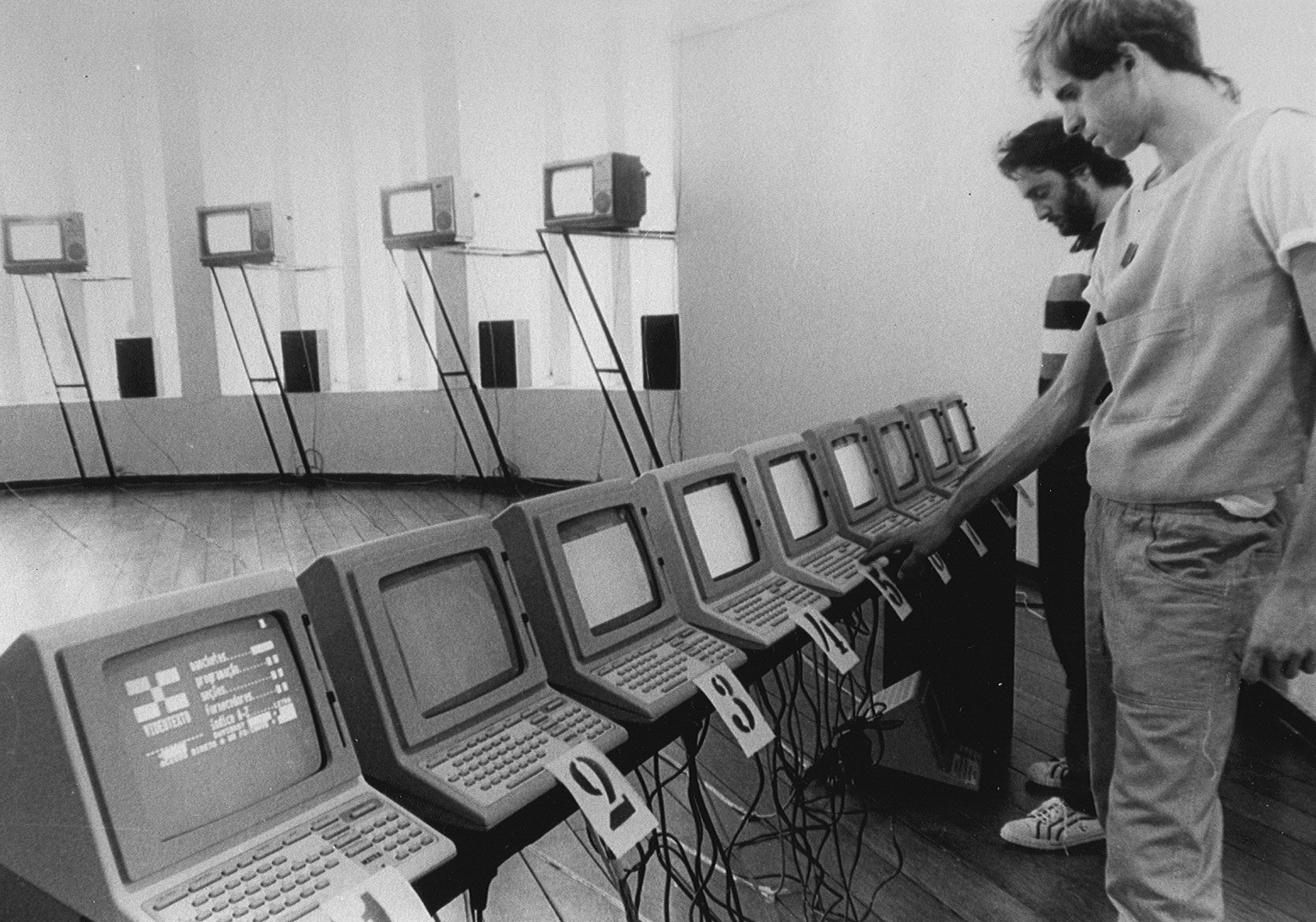Arte-veículo: intervenções na mídia de massa brasileira

Mario Ramiro's Clone (1983)
Art critic and curator Ana Maria Maia will present, at Galpão VB, the outcome of her research Arte-veículo: intervenções na mídia de massa brasileira [Vehicle-art: interventions in the Brazilian mass media], which she carried out in 2015 via the Visual Arts Production Stimulus Grant, Funarte – 2014. The bilingual eponymous book (Portuguese – English) will be distributed free and is slated for release in São Paulo on May 7, 2016, from 3pm to 5pm at Galpão VB. On the occasion, a panel featuring the author and artists Mario Ramiro and Daniel Lima will discuss issues brought up in the publication, which prompts reflection on the use of the press as a public sphere for art. The event is free of charge and open to the general public.
At a time of dismantling of media vehicles and the ensuing decline of experimental efforts within them, the publication pulls together accounts and documents that can spark the reencounter of today’s generations with various forms of media intervention. In between the advent of television, which happened in 1950 in Brazil – as part of the same cosmopolitan wave that would lead to the opening of the São Paulo Art Biennial the following year – and the popularization of the internet, which paved the way for a discussion of “tactical media” in the country in the late 1990s, on numerous occasions, newspapers, magazines, radio and TV stations were occupied by artists in a bid to distort their languages and problematize the narratives they built for the status quo:
From Flávio de Carvalho’s columns on the Diário de São Paulo daily to the graphic overhaul of Jornal do Brasil by Amílcar de Castro and Reynaldo Jardim; from the classified-art of the Bruscky Santiago Team to Cildo Meireles’ newspaper inserts Inserções em Jornais; from Analívia Cordeiro’s video-dance to Glauber Rocha’s interview section in the Programa Abertura show, as inspiring to production companies as TV Tudo, Olhar Eletrônico, and TV Viva were; from Geraldo Anhaia de Mello’s anarchic actions on radio and TV to Lenora de Barros and Luiz Baravelli’s weeklies; from Yuri Firmeza’s fakes as an “invader artist” to the actual invasion of sports coverage and of urban life by militants from collectives like Frente 3 de Fevereiro and Contrafilé.
Far from completely and thoroughly mapping out these events in different regions of the country, Vehicle-art: interventions in the Brazilian mass media attempts to establish paradigmatic cases and articulate their readings with data from contexts that extrapolate the boundaries between art, the press, and society. The publication includes a survey of documents and five previously unpublished essays based on timeframes that the interventions and their shared strategies suggest.
In all, Vehicle-art features work by: 3nós3, Adbusters Media Foundation, A revolução não será televisionada, Analívia Cordeiro, Antonio Manuel, Amilcar de Castro, Caetano Veloso, Centro de Mídia Independente and Videohackers, Cildo Meireles, Contrafilé, Daniel Santiago, Di, Ducha, Eder Santos, Eduardo Coutinho, Eduardo Kac, Fernando Barbosa Lima, Flávio de Carvalho, Frederico Morais, Frente 3 de fevereiro, Geraldo Anhaia de Melo, Glauber Rocha, Jac Leirner, Jaguar, Jomard Muniz de Britto, Lenora de Barros, Luiz Paulo Baravelli, Marcello Nitsche, Márcia X, Mário Ramiro, MICO, Nelson Leirner, Olhar Eletrônico, Paulo Bruscky, Reynaldo Jardim, Ricardo Basbaum, Rubens Gerchman, Sandra Kogut, Tadeu Jungle, TVDO, TV Viva, Yuri Firmeza and Waltercio Caldas.
ABOUT THE AUTHOR
Ana Maria Maia is a contemporary art researcher, professor and curator currently pursuing a doctorate in Art Theory and Criticism at ECA-USP. She served as joint curator of the 33rd Panorama of Brazilian Art at the São Paulo Museum of Modern Art (2012-2013) and as the curator of Rumos Artes Visuais, at Itaú Cultural (2011-2012). From January to May 2016, she is undertaking a curatorial residency at Paço das Artes. Maia has edited the books Série Encontros - Flávio de Carvalho (Azougue, 2015) and Sobre artistas como intelectuais públicos (Casa Tomada & Prólogo Editora, 2012).
ABOUT THE PANELISTS
Daniel Lima holds a baccalaureate degree in Fine Arts from USP’s School of Communication and Arts and a master’s from the Center for Studies on Subjectivity at PUC/SP. Since 2001, he has created interventions and interferences in the urban space. He is involved with collective work and does research on media, racial issues and educational processes. Lima is also the director of production and publishing company Invisíveis Produções.
Mario Ramiro is a multimedia artist and a former member of urban intervention group 3NÓS3, which also created proposals for newspapers. His production runs the gamut from urban interventions to telecom networks, sculptures, installations, photography and sound art. Ramiro holds a master’s in Photography and New Media from the Higher School of Art and Media in Cologne, Germany and a doctorate in Visual Arts from the University of São Paulo, where he is a professor at the School of Communication and Arts.
LAUNCH FACT SHEET
What: Launch of the book Vehicle-art: interventions in the Brazilian mass media, by Ana Maria Maia, featuring a conversation with the author and the artists Daniel Lima and Mario Ramiro
When: May 07 (Saturday), from 3pm to 5pm
Where: Galpão VB | Associação Cultural Videobrasil ( Av. Imperatriz Leopoldina, 1150, Vila Leopoldina)
Phone: 11 3645 0516
PUBLICATION FACT SHEET
VEHICLE-ART: INTERVENTIONS IN THE BRAZILIAN MASS MEDIA
Author: Ana Maria Maia
Publisher: Editora Aplicação, 2015.
332 pages.
Bilingual edition (Portuguese–English).
E-version: https://issuu.com/arteveiculo/docs/arteveiculo_anamariamaia/1